Lathe Turned Stone Housewares
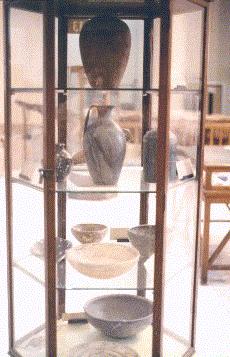
|
In the Cairo museum and in other museums around the world there are examples of stone ware that were found in and around the step pyramid at Saqqarra. Petrie also found pieces of similar stoneware at Giza. There are several special things about these bowls, vases and plates.
They show the unmistakable tool marks of a lathe manufactured item. This can easily be seen in the center of the open bowls or plates where the angle of the cut changes rapidly - leaving a clean, narrow and perfectly circular line made by the tip of the cutting tool.
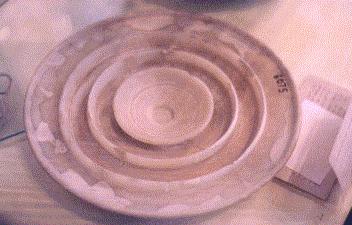 Photo taken at Cairo museum, 1996.
Photo taken at Cairo museum, 1996.
|
These bowls and stone dishes/platters are some of the finest ever found, and they are from the earliest period of ancient Egyptian civilization. They are made from a variety of materials - from soft, such as alabaster, all the way up the hardness scale to very hard, such as granite.
 Working with soft stone such as alabaster is relatively simple, compared to granite. Alabaster can be worked with primitive tools and abrasives. The elegant workings in granite are a different matter and indicate not only a consummate level of skill, but a different and perhaps more advanced technology.
Working with soft stone such as alabaster is relatively simple, compared to granite. Alabaster can be worked with primitive tools and abrasives. The elegant workings in granite are a different matter and indicate not only a consummate level of skill, but a different and perhaps more advanced technology.
Here is a quote from Petrie:
"...the lathe appears to have been as familiar an instrument in the fourth dynasty, as it is in the modern workshops."
|
Stoneware such as this has not been found from any later era in Egyptian history - it seems that the skills necessary were lost.
Some delicate vases are made of very brittle stone such as schist (like a flint) and yet are finished, turned and polished, to a flawless paper thin edge - an extraordinary feat of craftsmanship.
|
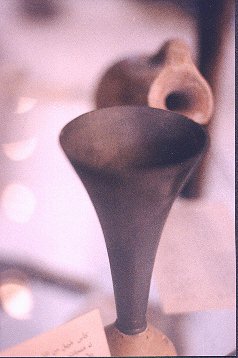 |
|
At least one piece is so flawlessly turned that the entire bowl (about 9" in diameter, fully hollowed out including an undercut of the 3in opening in the top) balances perfectly (the top rests horizontally when the bowl is placed on a glass shelf) on a round tipped bottom no bigger than the size and shape of the tip of a hen's egg !
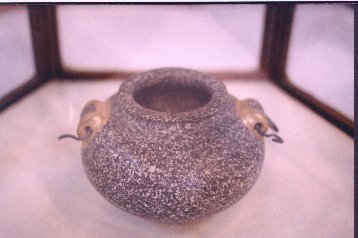
|
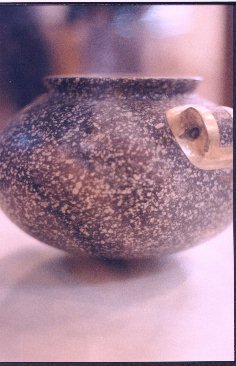
|
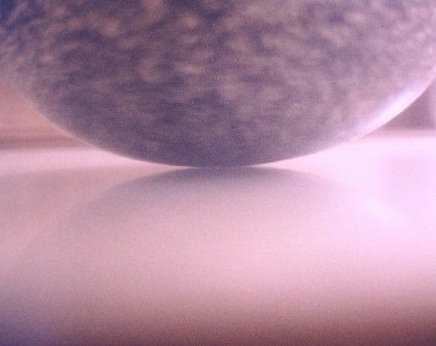
This requires that the entire bowl have a symmetrical wall thickness without any substantial error! (With a base area so tiny - less than .15 " sq - any asymmetry in a material as dense as granite would produce a lean in the balance of the finished piece.) This kind of skill will raise the eyebrows of any machinist. To produce such a piece in clay would be very impressive. In granite it is incredible.
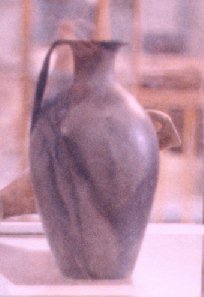
|
Other pieces turned out of granite, porphory or basalt are fully hollowed with narrow undercut flared openings, and some even have long necks. Since we have yet to reproduce such pieces it is safe to say that the techniques or machinery they employed to produce these bowls has yet to be replicated. |
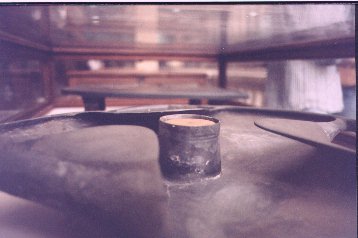 |
Here is a large (24" or more in diameter) piece turned out of schist (shown here glued back together in the Cairo Museum.) It is like a large plate with a central hub (about 2-3 " diameter) with an outside rim that in three areas spaced evenly around the perimeter is flared toward the central hub. It is a truly amazing feat of stone work. |
There were not just a few of these. Apparently there were thousands found in and around the Step pyramid.
The Step Pyramid is believed to be the oldest stone pyramid in Egypt - the first one built. It seems to be the only place where these kind of stone housewares were found in quantity, although Petrie found some fragments of similar bowls at Giza. Many of them have inscribed (scratched) onto them the symbols of the earliest kings of Egypt - the pre-dynastic era monarchs - from before the pharaohs. Judging by the primitive skill of the inscriptions, it seems unlikely that those signatures were made by the same craftsmen who fashioned the bowls in the first place. Perhaps they were added later by those who had somehow acquired them.
So who made these objects? and how? and where? and when? and what became of them, that their housewares were buried in the oldest of Egyptian pyramids?
|
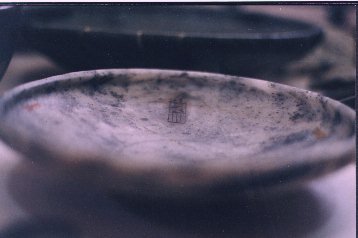
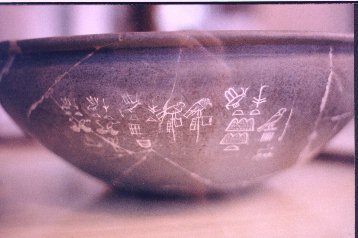
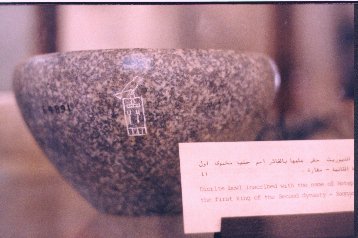
Diorite bowl inscribed with the name of Hotep
the first king of the Second dynasty - Saqqara |

 |